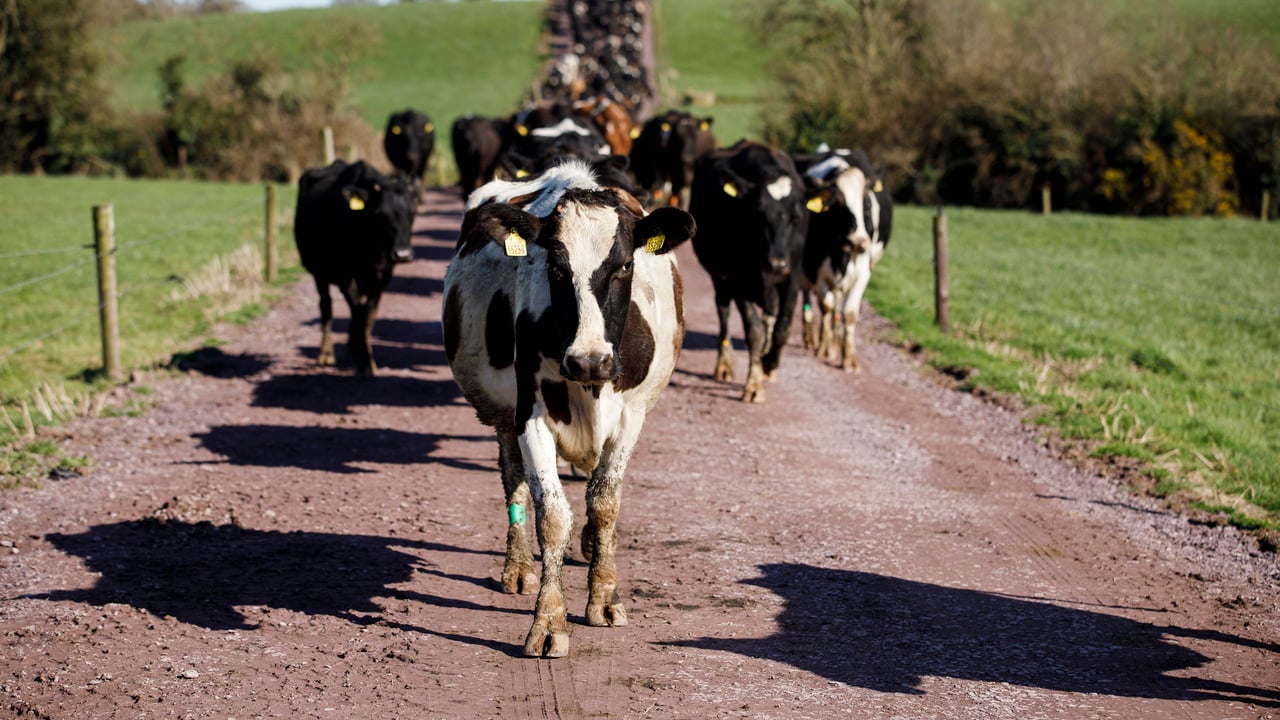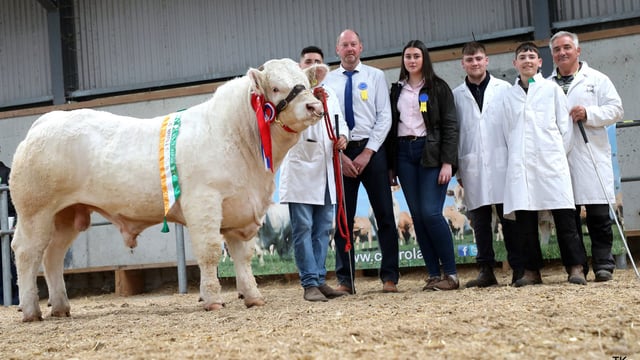Cow flow and avoiding congestion on roadways during breeding
As the breeding season progresses and oestrus activity hopefully begins to settle down, farmers should look at cow flow and congestion points on roadways.
Things are still quite hectic in farmyards at this time of the year due to cows getting handled and served, grass quality proving hard to manage, and many farmers trying to wrap up their first-cut silage.
However, having good roadways and ensuring good cow flow in and out of paddocks and to the parlour is crucial for keeping lameness issues at bay, along with high levels of grass utilisation, cow performance, and farm efficiency.
Having good cow flow through the grazing infrastructure does make for easier grassland management, as the grazing rotation is easier to implement, leading to a better utilisation of grass, reduced costs, and more milk solids produced.
A lot of dairy farms have insufficient roadways in place, which hinders cow flow and affects the herd’s movement between paddocks and the milking parlour.
As cows are now into their peak milk production and farmers are looking to hold that peak, it is important to have roadways in good condition to limit lameness and maximise production.
Around the breeding season, when there is more mounting activity, jumping and mounting on tight and poor condition roadways can lead to lameness or injury which can affect milk production but also impact the cow's chances of going back in-calf.
A Teagasc study on farm roadway featured 55 farms with herd sizes ranging from 30 to 760 cows. with the participating farms selected based on herd size and geographical location.
A roadway quality metric was developed to evaluate the condition of farm roadway, based on the following three variable assessed on each section:
- Roadway width;
- Surface condition score (ranging from one, which was inadequate for animal movement, to five, which was optimal);
- The presence of a congestion point on a roadway.
All of this information was compiled to use as an estimate of mean cow flow on each farm, defined as cows moved per minute (CPM).
The information gathered can be used to emphasise the importance of farm roadway infrastructure for efficient farm management and animal welfare.
The on-farm survey results were as follows:
| Herd size (cows) | <100 | 100-149 | 150-199 | 200-249 | >250 |
|---|---|---|---|---|---|
| Number of herds | 11 | 18 | 8 | 5 | 13 |
| Sample size of roadways (m) | 130 | 260 | 124 | 87 | 292 |
| Length of sections examined (m) | 87 | 129 | 114 | 157 | 185 |
| Mean roadway width (m) | 2.97 | 2.94 | 3.3 | 3.6 | 3.89 |
| Range roadway width (m) | 1.7-6 | 1.2-5 | 1.8-7.7 | 2.5-5.3 | 1.9-10 |
| Roadway width relative to herd size | 0.76 | 0.7 | 0.69 | 0.74 | 0.62 |
| Mean surface condition score | 2.46 | 2.75 | 2.81 | 2.64 | 3.06 |
| Public crossings | 10 | 20 | 20 | 4 | 41 |
| Mean total farm CPM | 35.6 | 36.6 | 41 | 43.7 | 55.4 |
In total, 893 roadway sections on the selected 55 farms were assessed, with many roadway widths being suboptimal for the number of cows on the farm.
The study outlined a standard width of 3.5m for a 50-cow herd, with another 0.5m allowed for every additional 50 cows thereafter.
The results showed that, on average, roadways were 70% of the recommended width relative to the herd, with only 4% of the roadways being an optimal width for the herd size.
Roadway width and surface condition were found to significantly affect the CPM rate, and the common denominator was better cow flow when roadways width and surface were of a good standard.
Measured CPM with varying roadway width and surface, with a surface condition index (SCI) ranging from one to five, were as follows:
| Width (m) | SCI 1 | SCI 2 | SCI 3 | SCI 4 | SCI 5 |
|---|---|---|---|---|---|
| 1 | 12.4 | 13.8 | 15.2 | 16.6 | 21.3 |
| 1.5 | 13.4 | 15.6 | 21.5 | 25.1 | 32.1 |
| 2 | 14.4 | 17.4 | 27.8 | 33.6 | 42.9 |
| 2.5 | 15.5 | 21.2 | 34 | 42.2 | 53.6 |
| 3 | 16.5 | 25 | 40.3 | 50.7 | 64.4 |
| 3.5 | 17.5 | 28.8 | 46.6 | 59.3 | 75.2 |
| 4 | 18.5 | 32.6 | 52.8 | 67.8 | 86 |
| 4.5 | 19.6 | 36.4 | 59.1 | 76.3 | 96.8 |
| 5 | 20.6 | 40.2 | 65.4 | 84.9 | 107.6 |
Public road crossings had a significant negative impact on cow flow, as it was found to reduce CPM by 32.7% on average, whereas congestion points did not have a major impact.
The study found that only 14.2% of farm roadways were in an optimal surface condition to allow for sufficient cow movement, with 24.4% being completely inadequate.
A number of factors affected surface conditions, including roadway width, congestion points, and the presence of a grass verge.
Overall, the study found that roadway infrastructure has not adapted to meet increased herd demands on dairy farms across the country.
This is not surprising as since many herds increased in size since the abolishment of quotas in 2015, grazing infrastructure, paddock sizes, and even water troughs did not increase in the same vein.
According to the study, it is important that farmers re-assess such factors.
It is essential for a farmer to ensure that their roadways are of adequate width, with a good surface condition and fewer congestion points to allow for increased cow throughput.
This is particularly important to consider in the coming days and weeks as, more than likely, stock bulls are going to be let out to mop up any repeats or cows yet to be served, and if roadways and cow flow is poor, injuries and costs may sky-rocket.





